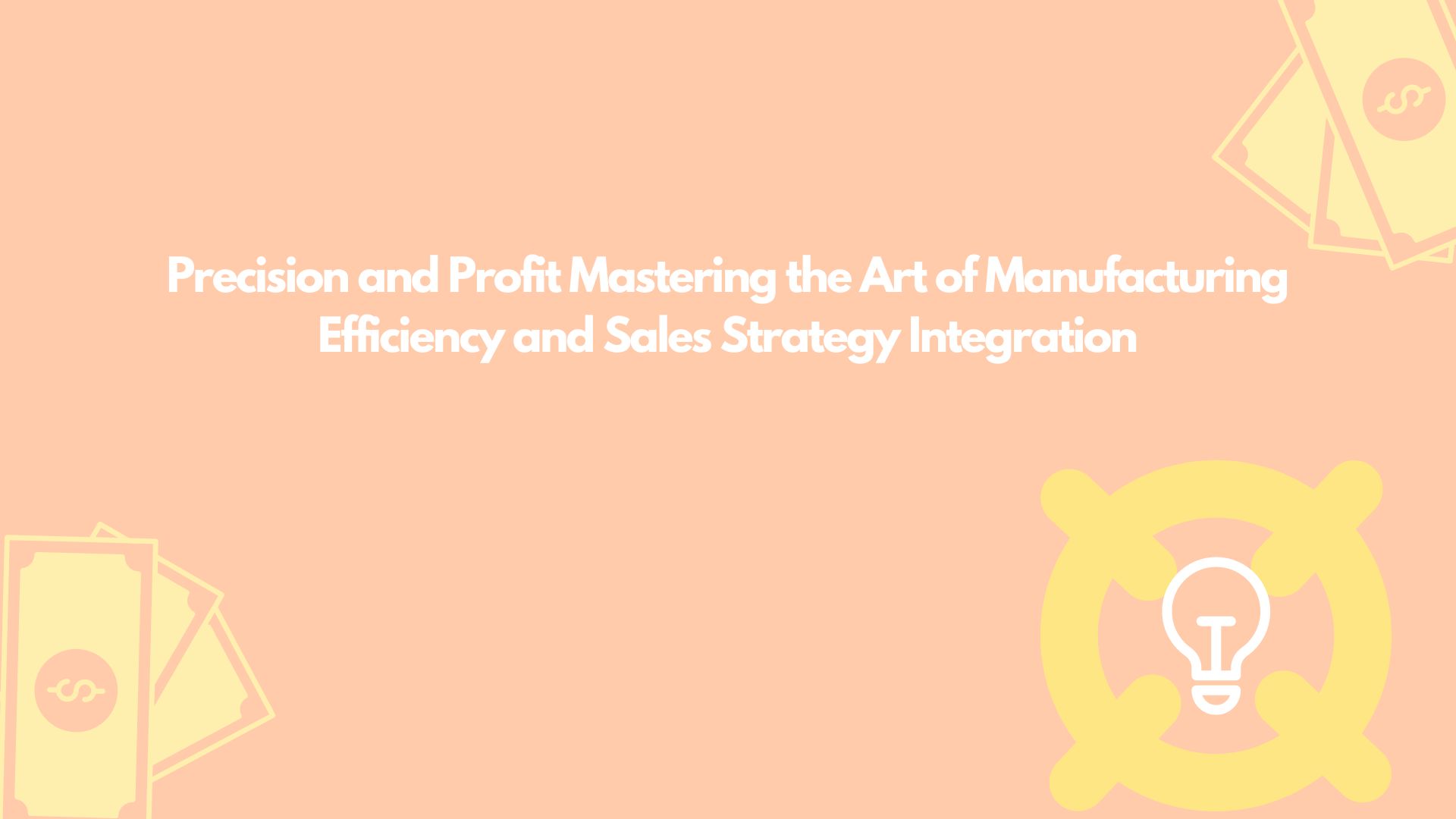In today’s fast-paced business environment, the seamless integration of manufacturing efficiency and sales strategy is crucial for achieving sustainable success. Companies that master this art not only enhance their operational performance but also significantly boost their market competitiveness. This blog delves into the essential aspects of aligning manufacturing processes with sales strategies, highlighting the benefits, challenges, and best practices involved.
The Importance of Manufacturing Efficiency
Manufacturing efficiency is the backbone of any production-based business. It involves optimizing processes, reducing waste, and ensuring that resources are used effectively to produce high-quality products. Efficient manufacturing leads to:
- Cost Reduction: By minimizing waste and optimizing resource use, companies can significantly cut down production costs.
- Quality Improvement: Streamlined processes ensure consistent product quality, which is essential for maintaining customer satisfaction and loyalty.
- Faster Production Times: Efficient operations reduce production time, allowing companies to meet market demand swiftly.
The Role of Sales Strategy
A robust sales strategy is equally vital. It involves understanding market needs, positioning products effectively, and implementing tactics to drive sales growth. Key elements include:
- Market Analysis: Identifying target markets and understanding customer needs.
- Product Positioning: Differentiating products to appeal to the intended audience.
- Sales Tactics: Developing approaches to reach potential customers and convert leads into sales.
Integrating Manufacturing Efficiency and Sales Strategy
The true power lies in the integration of these two critical areas. Here’s how companies can master this integration:
- Collaborative Planning: Sales and manufacturing teams must work together to forecast demand accurately. This collaboration ensures that production schedules align with market needs, preventing overproduction or stockouts.
- Flexibility and Adaptability: Manufacturing processes should be flexible enough to adjust to changes in sales forecasts. Agile manufacturing systems allow companies to respond quickly to market fluctuations.
- Technology Utilization: Implementing advanced technologies such as ERP (Enterprise Resource Planning) systems can provide real-time data, enhancing decision-making and synchronization between production and sales.
- Continuous Improvement: Adopting a culture of continuous improvement ensures that both manufacturing and sales strategies evolve with market trends and technological advancements.
Case Study: A Success Story
Consider the example of Company X, a leading manufacturer of consumer electronics. By integrating their manufacturing and sales strategies, they achieved remarkable results. They implemented an advanced ERP system that provided real-time data on production and sales. This allowed their teams to collaborate effectively, resulting in a 20% reduction in production costs and a 15% increase in sales within a year.
Their key strategies included:
- Demand-Driven Production: Aligning production schedules with real-time sales data to meet market demand precisely.
- Lean Manufacturing: Adopting lean principles to eliminate waste and improve efficiency.
- Customer Feedback Loop: Using sales data to gather customer feedback and continuously improve product quality and features.
Conclusion
Mastering the art of integrating manufacturing efficiency with sales strategy is a transformative approach that can propel businesses toward greater profitability and market success. By fostering collaboration, embracing technology, and committing to continuous improvement, companies can achieve a harmonious balance between production capabilities and market demands. This integration not only enhances operational efficiency but also drives sales growth, ultimately leading to a more robust and competitive business.
Incorporate these practices into your business strategy to unlock the full potential of your manufacturing and sales operations, and witness the profound impact on your bottom line.









